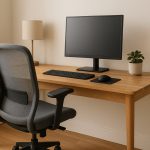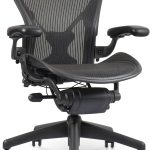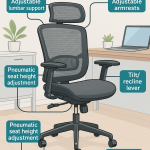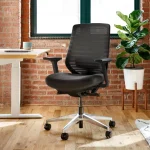Building an ergonomic workspace doesn’t have to cost a fortune. Small tweaks—like the right chair height, monitor level, and keyboard position—can dramatically improve posture and comfort. This guide shows how to create an ergonomic workspace setup on a budget using affordable chairs, smart accessories, and quick DIY adjustments that actually work. Whether you work from home full-time or part-time, these steps will help you feel better and stay productive.
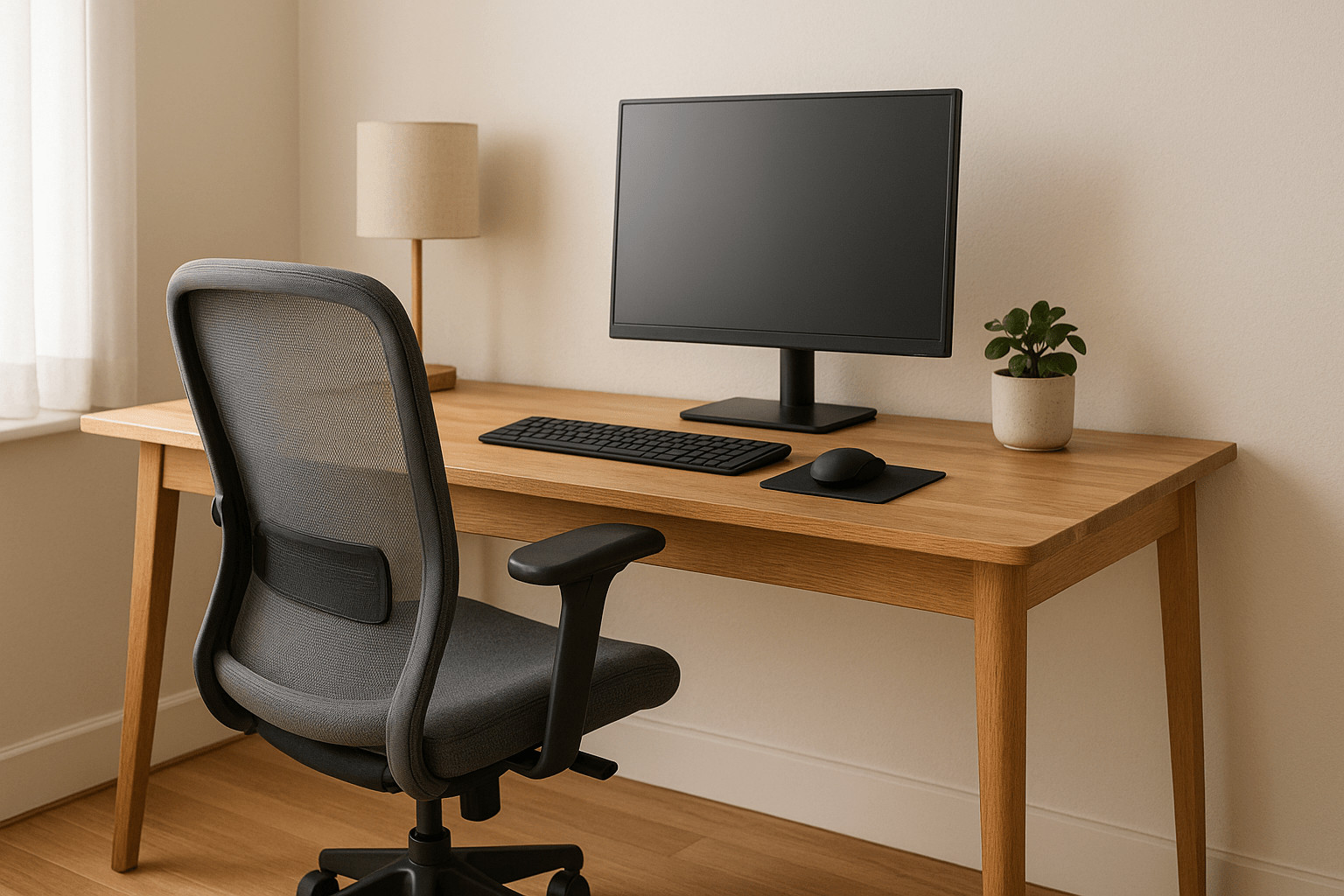
What Makes a Workspace Ergonomic?
An ergonomic workspace is designed to support your body’s natural posture and movements. It reduces strain on your spine, shoulders, and wrists.
Core elements:
- Chair with adjustable height and lumbar support
- Desk height aligned with elbows at 90°
- Monitor roughly at eye level
- Feet flat on the floor or footrest
Featured Snippet paragraph:
An ergonomic workspace setup aligns your body naturally — your screen at eye level, elbows at 90°, and feet flat — to reduce strain and improve posture.
Step-by-Step: Setting Up an Ergonomic Workspace for Less
1. Start with Chair Height and Lumbar Support
If you already own a basic office chair, adjust it before buying new gear. Add a lumbar cushion or small pillow for lower-back support.
👉 Optional mention: The Hbada Task Chair offers budget-friendly lumbar support under $150.
Disclosure: As an Amazon Associate, we earn from qualifying purchases.
2. Elevate Your Monitor
Use stacked books or an inexpensive monitor riser. Your eyes should look slightly downward (10–15° angle).
3. Optimize Keyboard and Mouse Placement
Wrists should remain straight; elbows bent at 90°. A low-profile keyboard or wrist rest can help prevent tension.
4. Support Your Feet
If your chair is tall, add a simple footrest or use a sturdy box to keep feet grounded and knees level with hips.
5. Adjust Lighting and Breaks
Natural light reduces eye strain. Add a desk lamp with a 4000 K bulb for soft daylight tone. Take short stretch breaks every 45 minutes.
Budget Ergonomic Upgrades Under $50
| Item | Example | Why It Helps |
|---|---|---|
| Lumbar Cushion | Everlasting Comfort Pillow | Improves spinal support |
| Monitor Stand | SimpleHouseware Metal Riser | Aligns screen height |
| Footrest | Adjustable Foam Rest | Reduces leg fatigue |
| Wrist Rest Pad | Ergonomic Gel Set | Minimizes wrist strain |
Common Mistakes When Setting Up a Budget Workspace
- Chair too low: Causes shoulder hunching.
- Screen too high: Creates neck strain.
- Poor lighting: Leads to eye fatigue.
- No lumbar support: Increases back pressure.
Expert Tips for Maximum Comfort
- Switch between sitting and standing every 30–45 minutes if possible.
- Keep essentials (mouse, keyboard, coffee mug) within reach.
- Stretch shoulders and wrists periodically.
- Track your comfort daily; small tweaks matter more than gear.
FAQs
Yes, by adding lumbar support, adjusting height, and using a footrest. Even dining chairs can work temporarily.
The top of the screen should be at or slightly below eye level, about an arm’s length away.
Alternating is best. Short standing breaks reduce back tension without over-fatiguing your legs.
Conclusion: Build Comfort That Lasts
Creating an ergonomic workspace on a budget is less about buying expensive furniture and more about making thoughtful adjustments. When your screen, chair, and desk support your body’s natural posture, you’ll notice real improvements in focus and comfort.
Start small—add a cushion, raise your monitor, stretch often. These steps build lasting habits that prevent pain and help you work smarter every day.
If you’d like to explore affordable seating options, visit the Affordable Ergonomic Chairs hub or compare models in Best Ergonomic Office Chairs.


